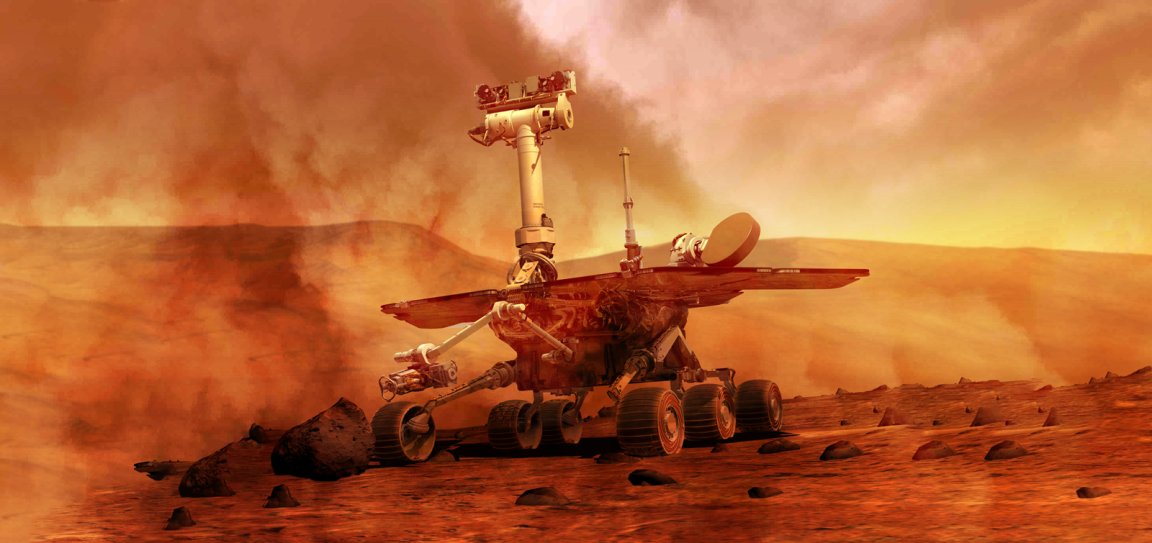
A dust storm is raging on Mars. It’s the most intense one NASA has seen in nearly 20 years of observation. In the past two weeks, it’s grown to cover a quarter of the planet’s surface. In the middle of the chaos: the little Opportunity rover.
Opportunity landed on Mars in 2004 for what was supposed to be a 90-day mission. The rover is now in its 15th year exploring the Red Planet — a testament to its resilience and excellent engineering. But Opportunity has never faced anything as formidable as the current dust storm on Mars.
Earlier today, NASA held a teleconference to update the public on Opportunity’s status, and while the current situation is grim, the agency is still holding out hope that the rover will be able to weather the storm.
The primary problem isn’t the dust itself — as John Callas, Opportunity project manager at NASA’s Jet Propulsion Laboratory (JPL), said during the call, “The physical volume of dust that would fall on the rover is really tiny…we’re talking about a single layer of dust that could accumulate on the rover.”
The main issue is that this dust blocks out sunlight, and Opportunity is primarily solar-powered (it also has about 8 watts of thermal energy available). Without sunlight, Opportunity can’t power up.

Yesterday, Opportunity missed a check-in call from NASA, and the team on Earth thinks the rover might be out-of-touch for the next several days.
“Our expectation at this point is that the rover has gone to sleep. It’s in its low-power mode, and it’ll remain in that low-power mode until there’s sufficient energy to charge the batteries back above a certain threshold,” Callas said during the press conference.
Another concern is Opportunity’s temperature, which drops when the rover isn’t active. If that temperature drops too low, Opportunity could lose its ability to operate. Thankfully, it doesn’t look like that’ll be a problem.
“The good news there is that the dust storm has warmed temperatures on Mars,” said Callas. “We’re also going into the summer season, and so the rover will not get as cold as it would normally. We’ve done an estimate that shows the rover should stay above its minimum allowable operating temperatures for the long term, so we should be able to ride out this storm.”
Aside from the potential threat to Opportunity, the dust storm on Mars could actually be a boon for NASA researchers.
“The current dust storm is providing us with an unprecedented opportunity to learn more about Mars and the many challenges it presents for exploration,” Jim Watzin, director of the Mars Exploration Program at NASA Headquarters, said during the call. “As we work to pave the way for when human explorers arrive, it will be essential that we learn to monitor and hopefully predict these storms in order to help ensure the safety of the crew.”
So, for now, all the team on Earth can do is conduct their research as normal and wait for some signal from Opportunity. As Callas said during the call, “We’re concerned, but we’re hopeful that the storm will clear and the rover will begin to communicate to us.”